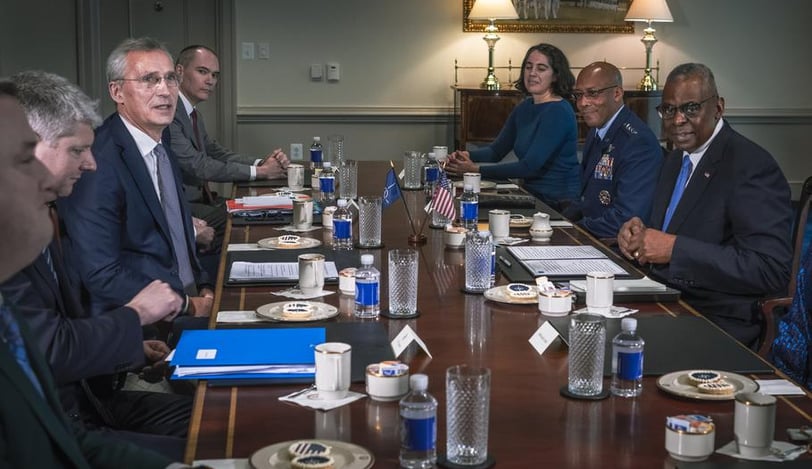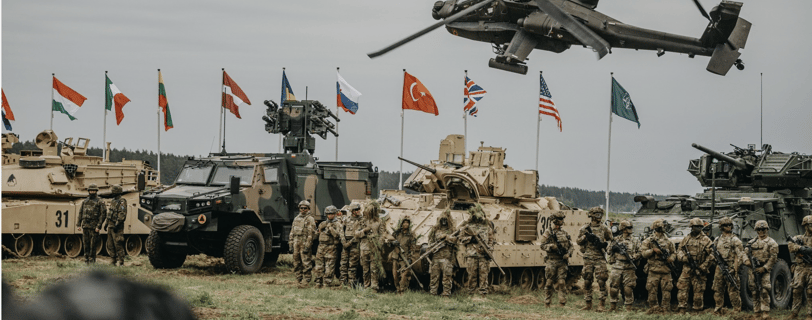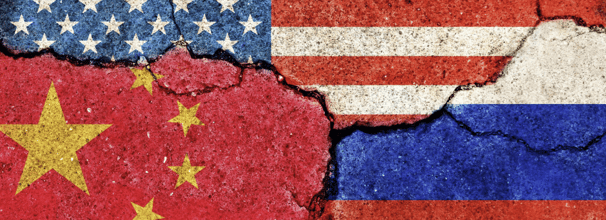NATO needs military production, not military exercises.
NATO leadership continues to focus on the wrong things.
1/31/20244 min read
NATO officials don’t seem to be worried about the current state of its affairs.
Ukraine continues to tread water on the battlefield. As the two-year mark of the illegal invasion approaches, the war appears to have grown stale. 45 billion dollars spent to date, without visible gains the United States seems to have it's work cut out for them in 2024.
The veteran NATO leader Jens Stoltenberg and Secretary of Defense Lloyd Austin talk as if the alliance is indestructible.
At a meeting at the Pentagon a couple days ago, the secretary commended the leadership of the alliance under Stoltenberg and gloated about its strength saying it remains unwavering as it faced challenges in the last couple years.
“NATO is the most powerful and successful alliance in history.” “And we’re going to keep it that way”. Austin said.
"NATO became even more capable last year when Finland joined, and I'm very pleased that the Turkish parliament voted last week for Sweden to join NATO" Austin said. "We're looking forward to welcoming Sweden."
Mr. Stoltenberg echoed some of the same thoughts on the alliance.
"NATO allies are providing unprecedented support to Ukraine, and it’s important that we continue to do so," Stoltenberg said. "Our support is not charity; it's an investment in our own security because the world will become more dangerous if [Russian] President [Vladimir] Putin wins in Ukraine."
"This is also closely watched in China … so that makes it even more important that we continue to support Ukraine," he said, adding that he welcomed the United States' continued commitment to supporting Ukraine.
Mr. Austin then said "I look forward to some frank discussions with you and our valued allies about what we need to strengthen our collective deterrence and defense."


This positive message, echoed by the two most powerful people in the military industrial complex comes as 'Steadfast Defender 2024' begins. A large-scale military war game conducted by NATO.
The exercise involves multinational operations, and will be conducted at different geographical locations over the next six months. The goal is to test and refine the members defense response to a European near-peer advisory.
This turns out to be a big deal as it is by far the largest-scale operation since the end of the Cold War. It requires all 31 members including Sweden, along with about 90,000 NATO troops. The US estimates 26,000 of its troops will participate in the exercises.


This exercise does seems like positive news for the head of NATO and the man in charge of the pentagon, however it only contributes to each of their vanities.
The real problem on the battlefield comes down to production; something each of these men know but don't seem to want to raise the alarm bells.
NATO is not producing enough resources to compete on the attrition front. Meanwhile, Russia can continue to fund the invasion for many years to come, as they have just increased its military budget. This new revenue won't only go towards funding, due to the Russians already have quite a bit of production in place. Something almost all western countries are hesitant about. After all, many high-level members have their own problems at home, whether financially or politically. The United States being the most important of all.
Last year, The New York Times covered a story of the American attempt to cripple Russian military production which detailed how bad of a job we are doing.
The Russian military production now dramatically exceeds the US and its NATO allies.
As in most wars, artillery has played a major role in the Ukraine conflict. Russia’s advantage on the quantity and cost of artillery production is enormous.
As of 2024, Western officials believe that Russia is on track to produce 2 million artillery shells a year—this figure is about double what the pentagon previously estimated just 2 years ago.
The U.S. plans to increase monthly production of 155mm artillery shells over the coming years up to 100,000 in 2025, the Pentagon's chief weapons buyer Bill LaPlante said.
"We're going to be at 100,000 per month in 2025. We were at 14,000 per month 6 or 8 months ago, we are now at 28,000 a month today."
This is quite the contrast from Russia’s production. Even at 100,000 units manufactured a month it’s still a long way from 2 million a year. Part of the disparity comes from cost.
Russia can manufacture artillery much cheaper than the US or any other NATO member for that matter. In part because Moscow does not care about safety and quality the way the United States does. There is also a regulations faced in many western countries that drives up cost.
For example, the price to manufacture a standard 155mm artillery round in a Western country cost roughly 5000-6000 USD. That same shell in Russia can be made for about 600 USD.
Despite the new members of the most "powerful and successful alliance in history" NATO has some work to do on the funding and production front. The disparity in production is showing on the battlefield as a Russian advantage in material.


It makes you wonder what cards NATO can actually play in the event of another Russian invasion, or better yet, a Chinese invasion of Taiwan.
